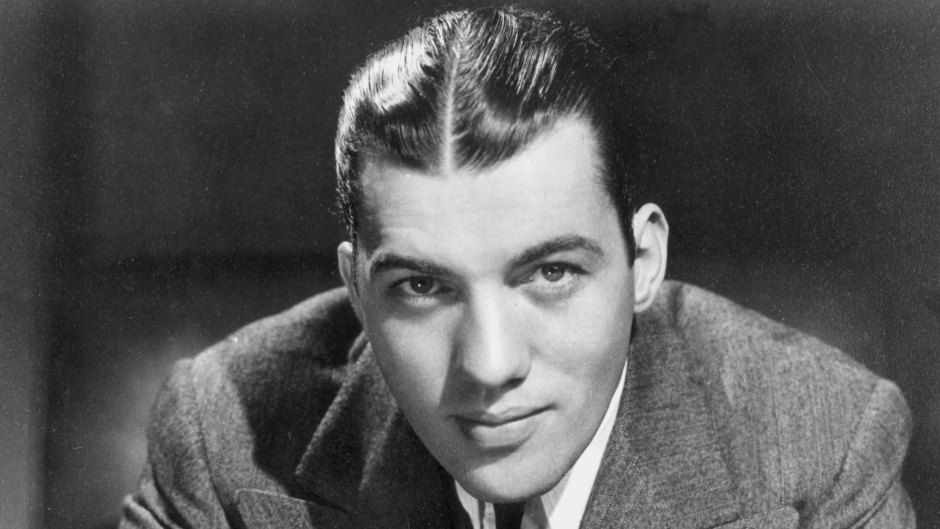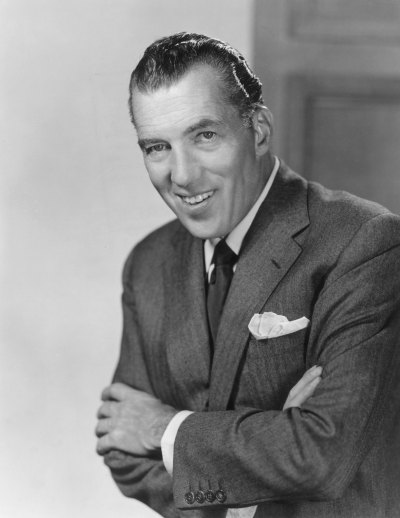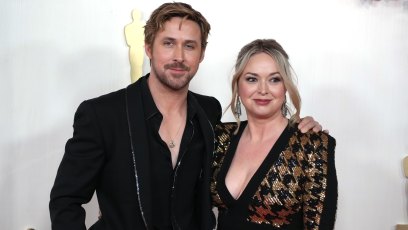
Getty Images
Ed Sullivan’s Family Remembers Him as a Devoted Family Man: ‘To Me, He Was Just Grandpa’
Wherever Ed Sullivan went, it was a really big show. When Robert Precht, the eldest of his five grandkids, starred in a sixth-grade production of The Pirates of Penzance in Scarsdale, New York, the TV legend proudly showed up. “Kids were racing down the stairs trying to get his autograph, and he was good-natured about it,” Robert exclusively recalls to Closer Weekly in the magazine’s latest issue, on newsstands now. “He always had time for his fans.”
And for his family. Ed was happily married to wife Sylvia from 1930 until her death in 1973. “They had a very good marriage, and she was his biggest fan,” granddaughter Margo Elizabeth Speciale tells Closer. They had only one child, Betty, whose husband, Bob Precht, worked as a producer on The Ed Sullivan Show, the groundbreaking and wildly popular variety show that ran from 1948 to 1971.

“He was a big deal to America, but to me, he was just Grandpa,” says Margo. “I remember being on the couch in our living room and him doing little magic tricks and pretending to take his thumb off.”
Born in Harlem, New York, Ed started out as a columnist for the New York Daily News, writing about sports and theater. But he toiled in the shadow of Walter Winchell, the most famous newspaperman in America. “There was a fierce rivalry,” says Robert. “He wanted to be remembered as the best at something, and after a lot of struggle, he became the best emcee.”
The new medium of television allowed Ed that opportunity, but it took him years to become comfortable with his stiff on-camera appearance. “He was Everyman, your uncle next door, but critics tore him apart in the beginning because they felt he was so awkward,” says Margo. “He learned to laugh at himself, and that was an endearing quality.”

Besides, Ed knew he wasn’t really the star of the show. He was only there to introduce a wide array of performers, from novelty acts like the Italian puppet Topo Gigio to such rock ’n’ roll superstars as Elvis Presley and The Beatles. Perhaps most importantly, he gave a platform to African-American artists like Diana Ross and the Supremes and Stevie Wonder during an era when racial segregation was still common.
“Through his body language and the way he introduced people, he conveyed a real affection for African-American culture,” says Robert, who’s working on a biography of his grandfather. “He created a kind of model integrated society.”
Margo is currently making a documentary about Ed’s role as a “silent force in the civil rights movement. By having African-American performers on the show and treating them with dignity and respect, he showed acts white audiences had never heard of before who are household names today and, most importantly, he treated those artists with dignity and respect — during a time when racism was the norm, challenging America to do the same.”

Ed’s intentions weren’t overtly political, but his belief in fundamental human decency always came across. “He had a strong sense of what was just and unjust,” says Robert. “He made his life a big stage, and he educated the American public about performers and New York life.”
A year after Sylvia’s passing, Ed died of cancer at 73 in 1974. But his spirit lives forever in his fans’ memories. “When people think of him, they think of family togetherness — watching his show together,” says Robert. “It’s a legacy of shared experience that’s a unique, vanished part of America.”
For more on your favorite stars, pick up the latest issue of Closer Weekly, on newsstands now — and be sure to sign up for our newsletter for more exclusive news!
Be sure to check out and subscribe to our Classic TV & Film Podcast for interviews with your favorite stars!








































